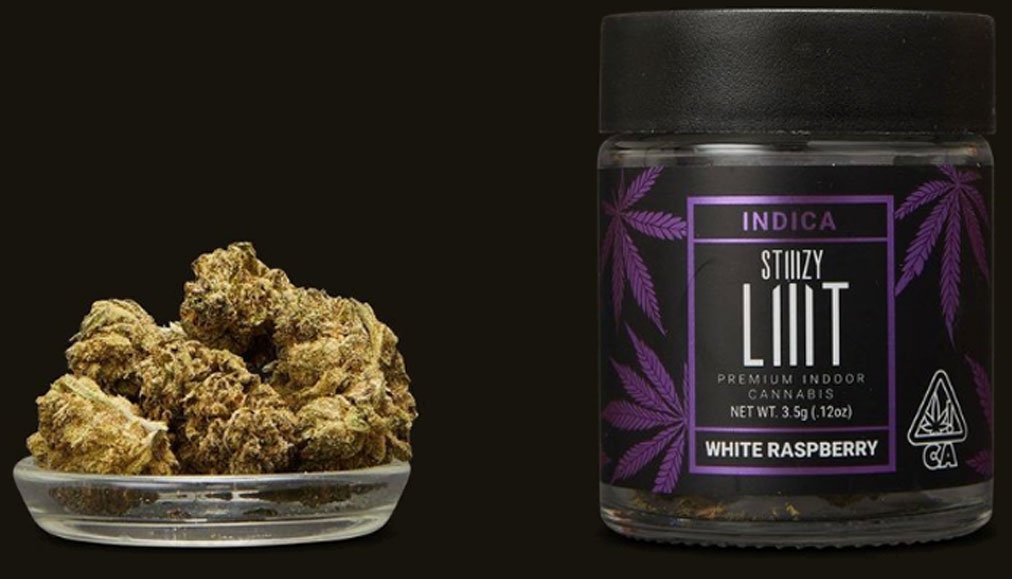This article was scientifically reviewed by Daniel Hanna, PharmD
When you visit a dispensary, a good budtender will be able to tell you which strains have stimulating effects and which might be better for sleep. When shopping for cannabis online and comparing strains, it’s common to see some described as “energizing” or “stimulating”. Many cannabis users strongly believe that certain strains offer uplifting effects that provide them with energy.
Is THC the substance in the plant that is potentially causing these effects? The answer is no, but the situation is complicated. THC has a unique way of interacting with the human body through the endocannabinoid system, making it hard to classify exactly which types of effects this cannabis compound has.
In this guide, we’ll explore the diverse ways THC interacts with your system and explain why cannabis might provide stimulating effects. Defying categorization, THC isn’t a stimulant, depressant, or hallucinogen—but it might be a little of all three.
What is THC?
Delta-9 tetrahydrocannabinol (delta 9 THC, delta 9, or just THC) is the primary active compound in most breeds of cannabis. Discovered in the mid-20th century, THC exerts psychoactive effects by interacting with the brain’s cannabinoid receptors, which exist to accommodate the flow of endocannabinoids (cannabinoid-like, body-generated compounds) throughout your body.
THC can be addictive, it’s possible to develop a tolerance to this cannabinoid, and heavy THC use may not be psychologically advisable to all individuals. Aside from these potential reasons for caution, THC is still a remarkably well-tolerated substance. It’s virtually impossible to overdose on THC, with both its short-term and long-term effects being very mild compared to both synthetic pharmaceutical drugs or plant-based psychedelics.
How does THC interact with the human body?
THC primarily interacts with the human body by activating the CB1 and CB2 receptors. In the absence of plant-derived cannabis compounds, these receptors primarily exist to regulate the flow of anandamide, a substance that is structurally similar to THC in structure.
Other endocannabinoids may serve any number of different purposes, but none of them activate the brain’s CB1 receptors as intensely as THC. As a result of this phytocannabinoid “mega-activation,” the brain is flooded with a surge of pleasure-inducing dopamine, resulting in a feeling of euphoria or “being high.”
For many substances, the above information might be enough to explain how they interact with the human body, but cannabis can contain hundreds of different compounds, significantly complicating the way this plant affects your system.
Does THC have stimulating effects?
No, THC does not have stimulating effects in and of itself. If you felt energized or even wired after smoking weed, it wasn’t simply due to the presence of THC. Other compounds in cannabis flower are known to be stimulating, however, and it’s even possible these compounds modulate the effects of THC to impact the way this cannabinoid affects the human body as well.
Is THC a CNS depressant or stimulant?
THC is not considered to be either a depressant or stimulant of the central nervous system (CNS). Early research indicated that cannabis might have a CNS-stimulating effect, but that was before researchers had effectively parsed out the effects of all the different compounds in the plant. Contemporary medical science considers cannabis to be a substance that can have the effects of a stimulant, depressant, or even hallucinogen, but nonetheless is truly none of the three.
Is THC a hallucinogen?
No, THC is not a hallucinogen even though it can sometimes have hallucinogenic effects. This intoxicating cannabinoid can certainly change the way you experience the world, and it might feel strange—especially for new users.
A hallucinogen, however, is a substance that reliably produces auditory or visual hallucinations in most people who take it. While THC can have a quasi-hallucinatory effect, it does not interact with the areas of the brain involved in sensory perception the way that actual hallucinogens do.
Are other cannabis compounds stimulants?
If THC doesn’t have CNS-stimulating effects, what is responsible for the energizing effects many users experience after using certain strains of cannabis? Let’s look at 3 non-THC substances present in cannabis to find out:
Is CBD a stimulant?
The second most commonly found cannabinoid, CBD, also does not stimulate the central nervous system. Like THC, CBD is not considered to have either stimulant or depressant effects.
Is CBG a stimulant?
Many strains of cannabis also contain trace concentrations of CBG, another non-intoxicating cannabinoid that’s being investigated for its digestive and antimicrobial properties. Like its fellow cannabinoids CBD and THC, however, CBG has not been determined to have any directly CNS-stimulating effects.
Are terpenes stimulants?
Some terpenes appear to have stimulating effects, but none of these aromatic plant oils have been discovered to directly stimulate the central nervous system. Cannabinoids combine with terpenes to provide the entourage effect, a form of synergy that boosts and modifies the effects of cannabis. Depending on the terpenes in question, the entourage effect can make the THC experience either upbeat or more relaxing.
Since they don’t increase activity in your brain, scientists aren’t quite sure why terpenes like limonene and terpinolene are so commonly reported as providing stimulating effects. It’s possible there’s simply something in the aroma or taste of certain terpenes that makes you feel more alert and focused. Substances don’t have to directly boost your brain to make you feel energetic, after all.
Do Sativa terpenes have stimulating effects?
Yes, many cannabis strains with sativa-leaning terpene profiles are widely considered to have stimulating or energizing effects. None of the terpenes commonly present in sativa cannabis strains have been documented as being directly CNS-stimulating, but it’s a fact that you’re more likely to feel energized than sedated after using a strongly sativa-dominant strain of cannabis.
The science behind THC’s stimulation
When you put all the evidence together, there is no simple explanation for the stimulating effects some users experience after ingesting certain strains of cannabis. None of the compounds in cannabis have been discovered to directly stimulate the nervous system, and overall, cannabis is a plant that defies classification.
What is the difference between adult-use and medical cannabis products?
You can use cannabis as a medicine for any number of things–to improve your mood, sleep better, or even to help relieve pain. This is true whether the product is labeled medical or not. However, there are strains and formulations, such as Rick Simpson Oil, that are specifically intended for medical use. These products may be more potent, or made into special dosage forms like topical creams or capsules that make them easier to use for certain conditions. Often medical cannabis will have higher amounts of less psychoactive cannabinoids, like CBD, CBG, or CBN, but they can also contain a significant amount of THC. Overall, it is always safest to consult with your doctor or another trained medical professional about whether you should use cannabis to treat any symptoms or conditions.
Are there any drug interactions with cannabis?
Cannabis can interact with certain medications in your body, possibly increasing or decreasing their effectiveness and leading to adverse effects. While cannabis has been shown to be relatively safe for most people, depending on which combination of drugs, these interactions can be serious and potentially harmful. Seek the advice of your doctor or pharmacist before introducing any new medications to your regimen.
How long should I expect to feel the effects?
The time it takes for the effects to kick in and how long before it wears off mostly depends on the dosage form and your individual biology. If smoking or vaping, you’ll begin to feel the effects of cannabis within a few minutes. It happens quickly as it enters your bloodstream through your lungs almost immediately after inhaling.
With an edible, your digestive system has to metabolize the cannabis to get it into your bloodstream. Edibles usually start taking effect within an hour, but it could take up to 3 hours. If it seems to be taking a long time to start working, be patient before taking a second dose that might end up being stronger than you anticipated. Edibles typically wear off in about 4 to 6 hours, with residual effects sometimes lasting through the day.
How do I know if there are any additives in this product?
Most states require testing for solvents, heavy metals, mold, and pesticides that may occur in the processing of the cannabis product to ensure that it’s safe to use. This way, if a product has made it to the shelf in your dispensary it should be safe to use. In addition, grower/processors will usually include a label on their packaging and their website may detail which growing and extraction methods they use.
Is vaporizing better for you than smoking?
Even though cannabis is generally safe for most people, inhaling the smoke from any burning plant has the potential to be bad for your lungs, and might just be unpleasant for some. Vaping from a pen or cartridge involves inhaling just the vaporized oil of the plant, usually at a much lower temperature than the smoke of a joint. In that sense, vaping may be the better option. There are some health concerns associated with additives that some manufacturers may include in their vape cartridges, but it is still a convenient way to get the quick-acting effects of your favorite strain without the byproducts of smoke in your lungs. Using a flower vaporizer allows you to use unprocessed flower that is heated just enough to release vapor without the high temperatures that would burn the flower and make smoke. For more information about the specific vaporizer or cartridge you’re interested in, ask your friendly budtender or check the brand’s website.

